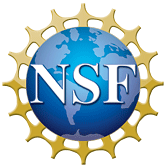Azimuthal averaging -- Reconstruction filtering techniques for finite-difference general circulation models in spherical geometry
To Access Resource:
Questions? Email Resource Support Contact:
-
opensky@ucar.edu
UCAR/NCAR - Library
| Resource Type | publication |
|---|---|
| Temporal Range Begin | N/A |
| Temporal Range End | N/A |
| Temporal Resolution | N/A |
| Bounding Box North Lat | N/A |
| Bounding Box South Lat | N/A |
| Bounding Box West Long | N/A |
| Bounding Box East Long | N/A |
| Spatial Representation | N/A |
| Spatial Resolution | N/A |
| Related Links |
Related Dataset #1 : Supplementary Material (Simulation code and data) for the paper Dang et al., gmd, Azimuthal averaging–reconstruction filtering techniques for finite-difference general circulation models in spherical geometry,2021 Related Software #1 : dangt-ustc/TIEGCM2.1: TIEGCM 2.1 |
| Additional Information | N/A |
| Resource Format |
PDF |
| Standardized Resource Format |
PDF |
| Asset Size | N/A |
| Legal Constraints |
Copyright author(s). This work is licensed under a Creative Commons Attribution-NonCommercial 4.0 International License. |
| Access Constraints |
None |
| Software Implementation Language | N/A |
| Resource Support Name | N/A |
|---|---|
| Resource Support Email | opensky@ucar.edu |
| Resource Support Organization | UCAR/NCAR - Library |
| Distributor | N/A |
| Metadata Contact Name | N/A |
| Metadata Contact Email | opensky@ucar.edu |
| Metadata Contact Organization | UCAR/NCAR - Library |
| Author |
Dang, Tong Zhang, Binzheng Lei, J. Wang, Wenbin |
|---|---|
| Publisher |
UCAR/NCAR - Library |
| Publication Date | 2021-02-10T00:00:00 |
| Digital Object Identifier (DOI) | Not Assigned |
| Alternate Identifier | N/A |
| Resource Version | N/A |
| Topic Category |
geoscientificInformation |
| Progress | N/A |
| Metadata Date | 2025-07-11T19:09:45.706495 |
| Metadata Record Identifier | edu.ucar.opensky::articles:24140 |
| Metadata Language | eng; USA |
| Suggested Citation | Dang, Tong, Zhang, Binzheng, Lei, J., Wang, Wenbin, Burns, Alan, Liu, Hanli, Pham, Kevin, Sorathia, K. A.. (2021). Azimuthal averaging -- Reconstruction filtering techniques for finite-difference general circulation models in spherical geometry. UCAR/NCAR - Library. https://n2t.org/ark:/85065/d77084s9. Accessed 13 October 2025. |
Harvest Source
- ISO-19139 ISO-19139 Metadata

